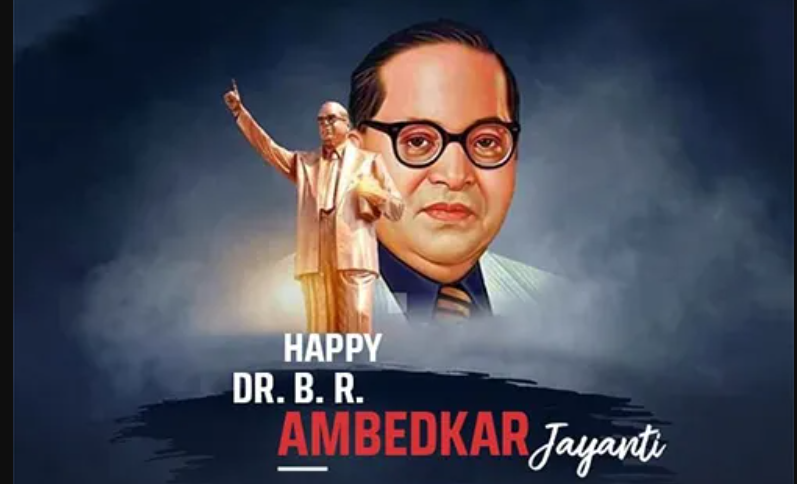
Every year on April 14, people across India stop and remember a man who didn’t just talk about change he lived it. That man was Dr. Bhimrao Ramji Ambedkar, or as most of us lovingly call him, Babasaheb.
Now, Ambedkar Jayanti isn’t just about garlanding a photo or putting up blue flags. It’s much more. It’s about honouring a man who stood tall, even when the world tried to push him down. You’ll see rallies, processions, and people shouting “Jai Bhim!” from rooftops and no, it’s not just noise. It’s pride. It’s emotion. It’s remembrance.
In 2025, even the Chief Minister of Madhya Pradesh, Mohan Yadav, went to Mhow, Indore Babasaheb’s birthplace. He paid his respects, of course, but also ended up sparking a bit of a political storm with a few of his remarks. Happens every year. But still, the main thing is that the day brings everyone together cross caste, class, and region to remember a man whose words still echo in every corner of this country.
So, Who Exactly Was Babasaheb Ambedkar?
Dr. Ambedkar was born back in 1891, in Mhow, in a time when caste ruled everything who you spoke to, where you sat, even whether you were allowed to drink water from the same tap.
He was born into the Mahar community, and from day one, he knew what discrimination felt like. But that didn’t stop him. In fact, it just lit a fire inside him.
He studied like there was no tomorrow Elphinstone College, Columbia University, then London School of Economics. The man wasn’t just smart he was brilliant. And he didn’t collect degrees just to hang them on a wall. He used them. He used every bit of his knowledge to fight for those who were always told they didn’t matter.
The Fight That Shaped a Nation
From Humiliation to Hope
As a child, he wasn’t allowed to sit on benches with others in school. Even drinking water was a struggle. But his father, who worked in the military, made sure young Bhimrao had access to books. And that love for learning changed everything.
He went from dusty schoolyards to the world’s top universities, and when he came back, he didn’t look for comfort. He looked for justice.
Building the Constitution
You know that big book that decides how India runs? Yeah, Dr. Ambedkar was the chief architect of it. As the head of the Drafting Committee, he filled those pages with ideas of equality, freedom, and fraternity.
Thanks to him, we have things like Article 17, which put an end to untouchability at least on paper. There’s still work to do, but that’s the foundation he laid.
He Spoke for the Silent
Dr. Ambedkar wasn’t just about paperwork and law books. He was on the ground too. In 1924, he started the Bahishkrit Hitakarini Sabha, trying to help Dalits get access to education and public services.
In Mahad, he led a movement just to claim the right to drink from a public tank. That’s how bad things were. But he didn’t back down.
Later, in 1956, he embraced Buddhism not the version with rituals, but a fresh, clean start. He called it Navayana, and lakhs followed him. It was a silent revolution.
His Work Went Beyond Castes
Ambedkar had his hands in many areas. He gave solid input on India’s economic policies, especially regarding currency and labour. He even formed a political party, the Scheduled Castes Federation, to push for proper representation.
And that famous book Annihilation of Caste wasn’t just words. It shook society’s roots and forced people to think.
Life Lessons from Babasaheb That Still Hold True
Honestly, his life teaches more than any self-help book today. If we had to pick just a few lessons, here’s what they’d be:
1. Education Isn’t Just for Exams
Ambedkar chased knowledge because he knew it opened doors. He didn’t stop at one degree — he kept learning, always.
2. Don’t Be Quiet When Things Go Wrong
Whether it was water rights or speaking in Parliament, he called out injustice. Loudly. Fearlessly.
3. Turn Your Struggles into Strength
He didn’t hide his pain. He turned it into purpose. That’s how real change begins.
4. Unity Matters More Than Labels
He wasn’t just for Dalits. He spoke for everyone who faced unfairness. His Constitution aimed to unite, not divide.
5. Kindness Is Powerful
Underneath all that sharpness was compassion. Every law he framed had one goal to give people dignity.
Why His Ideas Still Hit Home
Even today, when we see news about caste-based violence or social inequality, Babasaheb’s words feel fresh. His famous line
“I measure the progress of a community by the progress women have achieved” still makes you stop and think.
And let’s be real we’ve come far, but not far enough. The road ahead is still bumpy. But the tools he gave us education, organization, agitation they still work if we use them right.
So, What Can You Do on Ambedkar Jayanti?
You don’t have to go to a rally. Even reading a few pages of his speeches or discussing his work with friends can make a difference.
Try to live the values he stood for equality, justice, empathy. That’s how we carry his dream forward.
Not just for one day. But every day.
Looking for the next step? Try this: B. R. Ambedkar

No comments yet. Be the first to comment!